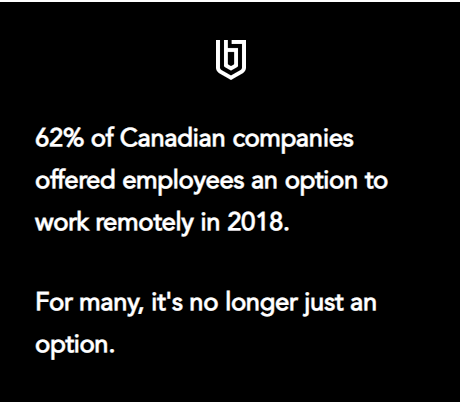How To Maintain Security When Employees Work Remotely
Bulletproof

A lot changed in early 2020. The largest public health crisis of our life thus far began in late January, when the COVID-19 global pandemic reached Canada. By mid-March, states of emergency were declared in most provinces. Businesses fortunate enough to be able were scrambling to sort out how to manage a sudden shift to remote work for an entire workforce in days or weeks, not the months or years their long-term planning may have anticipated.
Plans—and mistakes—were hastily made. Ad-hoc solutions were implemented. IT departments, if they existed, were stretched far beyond their limits. In the background roared social and economic chaos.
It may be hard to feel hopeful. Still, there is much that Canadian businesses can do to meet this challenge and stay prepared for the challenges ahead.
Remote work has been on the rise for well over a decade. A 2018 survey conducted by job search site Indeed found that 62% of Canadian companies offered employees an option to work remotely, and Global Workplace Analytics says that regular remote work in the U.S. has increased by 173% since 2005.
March and April 2020 proved to be a critical test of Canadian companies’ remote work infrastructure, and the test continues as COVID-19 forces more businesses to find alternatives to keeping their workforce in the office. Even those organizations with pre-existing remote work options weren’t necessarily prepared to move their entire workforce offsite in a matter of weeks (or even days).
As the dust settles and businesses start to adapt to the “new normal”, many are realizing that simply making remote work possible was just a first step toward a long-term remote-work strategy. Getting workers out of the office helps keep our workforce safe. Now that your people are protected, it’s time to ensure that your business data is protected, too.


Expecting a PDF?
We created this eBook as a web page for better mobile optimization, accessibility, & maintenance. Remember, you can bookmark this page for future reading, save it to the reading list on your mobile device, or print a hard copy. If you'd still like a PDF version of this eBook, you can download it here:
DOWNLOAD THE PDF.png?width=600&height=187&name=Untitled%20design%20(2).png)


